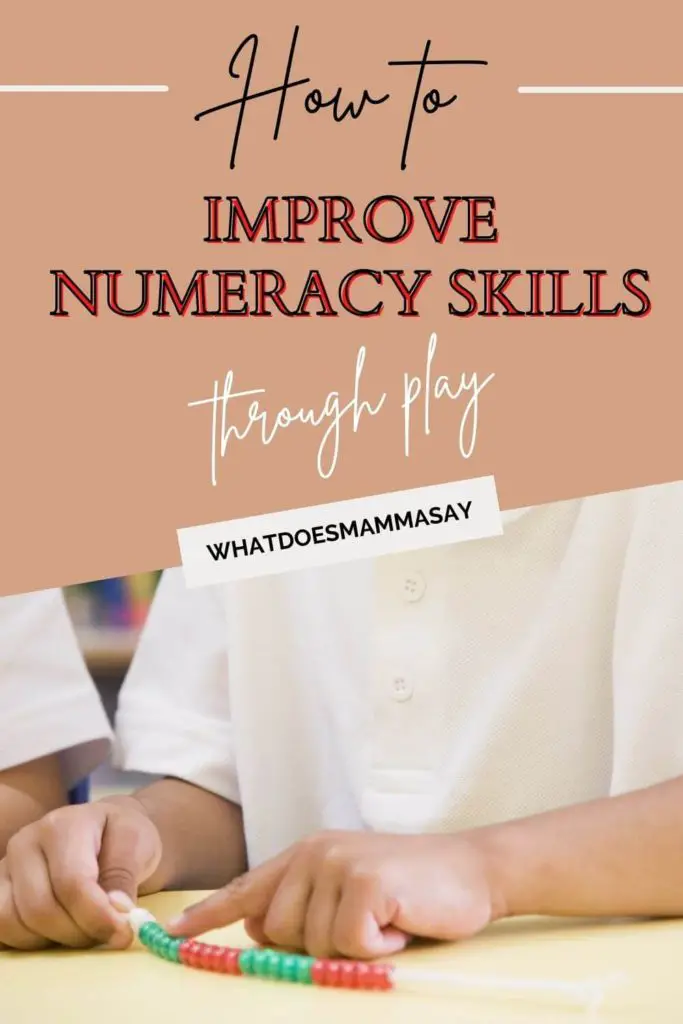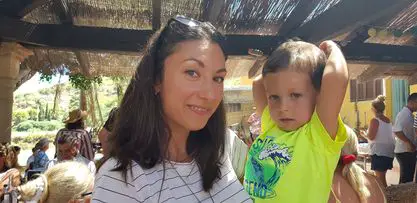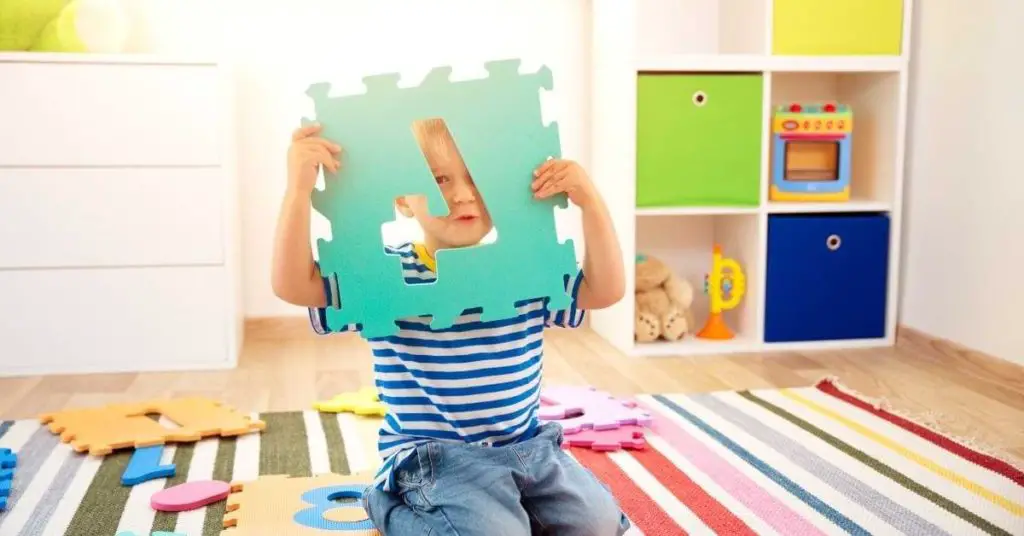As a proper grown-up, adept at adulting, perhaps it seems a long time ago that you last played. Yet for your kids, play is serious business. It’s how children develop and learn, making sense of the world.
Play is the way that children of all ages invest in a positive future. With a little thought and some well-placed resources; babies, toddlers, preschoolers, and school-age kids can develop and improve numeracy skills through play. No need for learning to feel like a lesson.
In this blog, we cover fun ways to involve numeracy in play that will keep the kids engaged and may just tempt you from the confines of adulting into the world of discovery and learning that is numeracy play.
This post may contain affiliate links and I may earn a small commission when you click on the links at no additional cost to you. As an Amazon Affiliate, I earn from qualifying purchases. You can read my full disclosure here.
Get the Play-Doh Out
Sensory play is an essential part of a child’s learning. Watching your kids roll sausages and then squish blobs of brightly coloured play-doh many seem about as far away from increasing numeracy skills as you can get.

Yet, working with malleable materials is a fantastic fun way to discover shape and dimension – key numeracy concepts.
It was the Swiss psychologist and child development expert, Jean Piaget (1896 – 1980), who really shone a spotlight onto how clay and play-doh can help with numeracy skills. Piaget identified the preoperational developmental stage of children, which lasts from around age 2 until about age 7. During this stage, Piaget noted that children learn about the world by experiencing it.
Malleable materials which can be played with in a hands-on fashion allow children to experience how size, space, shape, and dimension work.
Piaget called these concepts conservation: the logical concept that a certain quantity will remain the same despite adjustment of the container, shape, or apparent size. And if play-doh is not your thing, there are a host of other malleable materials to play with (some easier to clean up after than others!):
- Polymer clay
- Plasticine
- Magic/Kinetic Sand
- Mud
- Sand tray and water
- Mashed potato
- Corn flour mixed with colored water
Remember to provide different shaped containers, cutters, and tools to pour and shape the malleable materials so your little one can maximize the numeracy learning potential of the fun play.
Play Worlds
Play develops language and imagination. Preschoolers often narrate what they are doing or imagining as they interact with toys and – if you have one – you’ll notice how popular the dressing up box can be for children of all ages as they use props and costumes to enrich the imaginary world they create.
You can build numeracy into such imaginary and creative play by ensuring there are props that promote the inclusion of numbers and math concepts.
Play shops and play markets, stocked with play food are a great way to get children used to the idea of quantity and money. Older children can write their own imaginary shopping list and then visit the “store” that younger siblings create.
An old packaging container can become the store front, and items for “sale” laid out around the room. Perhaps you have a toy till that can be enlisted for the task. Or even a calculator to add up the price of goods being purchased.
There’s so much scope for children of all ages to engage in a level that is appropriate for their developmental ability. Ideas include:
- Asking your child what time their shop closes
- Encouraging children to write the prices on items for sale in their shop by providing simple stickers and pens
- Visiting your child’s play market stall and ask them to put “three oranges” or “five apples” in a bag for you
- Investing in toy scales so children can weigh out items for sale in their shop
- Providing your child with play money for use in the shop
Also Read:
Numbers for Toddlers: 25 Fun Games
Fun Games for Number Recognition
Strengthen Knowledge of Math in These Simple Steps
Hide and Seek
We’re all familiar with Hide and Seek. Who doesn’t love the excitement of finding something that is hidden? It’s easy to transform a simple game of Hide and Seek into a numeracy based fun learning activity.
You’re aiming to hide shapes around a room or around a space. Shapes can be 2D or 3D. You can easily make use of building blocks and wooden shapes from your baby’s shape sorters to maximize the shelf-life of such toys with older children.
Once you’ve hidden the items, you can ask your child to “go find the square” or “where’s the sphere”. This will increase their awareness of shapes as well as their math vocabulary.
You can ask children to hide the objects for you to find to flip the game and extend for longer.
Get Outdoors for a Scavenger Hunt
Perhaps you’ve heard of the Montessori method of learning? Prince William and Kate chose a Montessori school for their first child, Prince George. As a result, parents on both sides of the Atlantic are keen to implement ideas from the Montessori approach.
Dr Maria Montessori believed that fostering imagination through play in a simple and natural environment allowed children to learn through exploration.
A scavenger hunt outdoors is a great way to utilize a simple and natural environment for numeracy learning. Scavenger hunts allow children to develop the skills needed for classifying and sorting information. This is a key mathematical skill involved in identifying patterns and series of numbers.
Ask children to go find 5 green objects from outdoors or 7 different sized items.
Other ideas to support kids to identify, describe and classify objects through scavenger hunts include:
- Draw 5 man-made object you can spot in the garden
- Take a photo of 5 mini beasts you find outdoors
- Produce a bark rubbing of 3 different varieties of tree
- Fill a small sized container with natural objects that are bigger than your thumb
Estimate Experiments
It’s likely the toy box includes some type of play cars or vehicles, train track or even marble run. You can set up experiments to see which car goes fastest, or furthest.
This taps into skills of estimation as well as asking children to consider concepts such as speed and distance. You can have a lot of fun playing around with different angles of tracks and ramps to see how the toy car copes with differing slopes. Even toddlers can be encouraged to predict how far they think they can throw a ball or a beanbag.
Tidy Time Fun
Finally, when it’s time to tidy away or transition to bath or bedtime, you can continue to improve numeracy skills by encouraging children to get actively involved in tidying up the play space with the added fun of a timer challenge. Invest in an egg timer or countdown clock (there are plenty of free online versions available) that provide a visual or auditory way to mark time.
It is also a great way to involve kids in general housework. Give your kids the challenge of placing all the play items in the play box before the timer runs out.
Another numeracy based tidy task that feels like fun is to ask your child to put all the red bricks away, whilst you tidy the blue pieces (that skill of sort and classify, again). Turn it into a competition (who can collect the most, the fastest etc.) and you have turned tidy time into something more enjoyable for all.

Final Thoughts
Helping young kids develop and improve numeracy skills is vital since they are necessary not only for school but for day to day living. Think about how many times a day you want to know the time, make a recipe, plan a trip or work your mobile phone. All of these actions require a certain level of numeracy skills.
It’s never too early for kids to start learning Maths through play.
Hopefully, the suggestions above will give you some inspiration on how to incorporate numbers in everyday play.
About the writer:
Elizabeth Shields is an experienced author of online articles for various blog posts. She is passionate about parenting, home improvement, wellness and sustainability topics. She is a married mother of two living in Indianapolis and apart from writing, enjoys spending her time with her family and friends. Elizabeth’s website is https://www.deluxemaid.com/.

Mom of two wonderful children, dedicated teacher and book lover.








This post contains a lot of helpful tips that will come in handy. Thanks for this.
We’ve been loving Kinetic Sand in our house lately!
Great Ideas! I love a multisensory approach to learning!
These are some great ideas! Can’t wait to try them with my toddler when he gets a bit bigger
These are awesome activities! I love the idea of car experiments. My son will think that’s so fun!